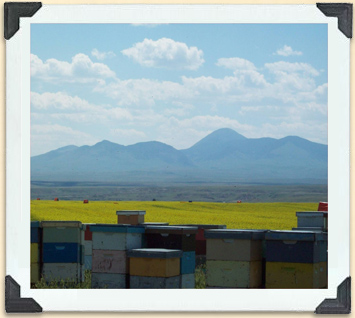The Keeper

Beehives and fields of canola in the Alberta foothills.
© Poelman Apiaries
Canadian Production
Like most agricultural products, honey production varies from year to year. On average (based on the years between 2002 and 2006), Canada produces 38 million kg of honey annually. That's a lot of honey! Most of it is produced in the Prairie provinces, where the bees visit large fields of flowers such as canola. Ontario has the largest number of beekeepers, but Alberta has the most hives.
The total value of Canadian honey produced during an average year is an incredible $122 million.




